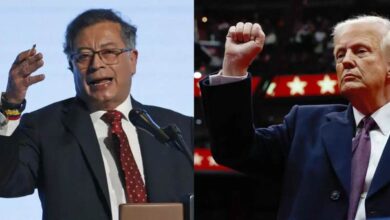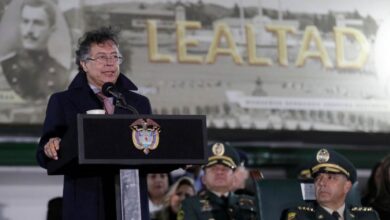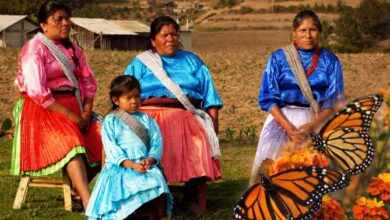Isolated Peru: What Is the Future of the Pacific Alliance after 12 Years?
More than a decade has passed since the formation of the Pacific Alliance. We analyze what is the projection of this multilateral organization

Photo: Government of Chile
LatinAmerican Post | Santiago Gómez Hernández
Listen to this article
Leer en español: Perú aislado: ¿Cuál es el futuro de la Alianza del Pacífico luego de 12 años?
Exactly 12 years have passed since on April 28, 2011, the presidents of Colombia (Juan Manuel Santos), Chile (Sebastian Piñera), Peru (Ollanta Humala) and Mexico (Felipe Calderón) founded the Pacific Alliance. It is a multilateral integration organization that sought to counterbalance Mercosur and unite 4 of the largest and most competitive economies in the region, taking advantage of possible connectivity with the entire Pacific.
The group has a population of about 230 million inhabitants, and their combined GDP represents 41% of the entire region. In addition, its economic power would represent the eighth world power. The AP was created with the firm intention of promoting integration, both economic and transit. It is a kind of European Union, built little by little. A scholarship program was even implemented to promote exchange between these 4 countries. Its success made it capture the attention of several nations. Even Ecuador, Guatemala, Panama, and Costa Rica have repeatedly expressed their intention to join the group.
Advance of the New Members
Ecuador: Since coming to power, Guillermo Lasso expressed his intention to join the group. So much so that his first international trip when he was elected president was to Colombia to meet with the then Colombian president, Iván Duque, and discuss the intention for the country in the center of the world to enter the Pacific Alliance.
The South American country only needs to sign a Free Trade Agreement with Mexico. As a prior requirement, all countries wishing to enter must have an FTA with all members.
Costa Rica: Since the presidency of Laura Chinchilla, the Costa Rican government has been advancing its entry into the group. With the arrival of Rodrigo Chaves, the Central American country reactivated its intention to enter and officially began negotiations to become part of the group. This indicates that they will still have a long way to go.
Guatemala: The Central American nation has expressed its desire to join the group on several occasions. Despite the fact that for now it begins with the procedures to close commercial agreements with all the members, its entry seems difficult in terms of immigration.
Panama: Despite the fact that the isthmus has been clear in wanting to join the group, there is still the obstacle of signing trade agreements with 2 of its members. Mexico and Colombia do not have any type of treaty, despite few attempts to sign agreements. Colombia has even classified Panama, on various occasions, as a tax haven, which would seriously complicate an agreement.
A Left-wing Leadership
The Pacific Alliance was born at a time when right-wing presidents governed the 4 countries. The group arose with the intention of being a mechanism that facilitates economic liberalism among member countries. So, today, when the majority of its leaders are of leftist ideology, what role does the Alliance play?
Also read: Presidential Elections in Paraguay: Everything you Need to Know
Although the governments today are different, it is true that the group has managed to survive. The integration mechanisms and welfare promises for its citizens seem to have an important weight. The leaders could see in this group a version of the European Union, where the socialist leaders have found a comfortable space in which to act.
If it is true that both Petro, Boric, AMLO and Bolaurte are presidents, in theory of the left, none have taken protectionist measures. All the leaders also find in the group spaces to take positions en bloc (today difficult with the isolation of Peru). For example, today when most members have progressive presidents, they can use the group to promote environmental protection policies.
An Internal Crisis
Today, one of the main problems or crises facing the Pacific Alliance is the political dispute between its members. With the dismissal of Pedro Castillo from his mandate and the replacement of his vice president, Dina Boluarte, the group seems to be falling apart. The current Peruvian president has had serious diplomatic disputes with her counterparts from Colombia (Gustavo Petro), Chile (Gabriel Boric); and Mexico (Andrés Manuel López Obrador).
All of these regional leaders have expressed their disapproval of the dismissal of socialist leader Pedro Castillo. Additionally, they have repeatedly expressed their support for the former president, who is in prison today. This has generated that confidence has been lost.
Beyond the political positions of its members, disputes appear to be the PA's main challenge. The stability that the 4 presidents can achieve in maintaining the group will define its success or failure. However, experiences such as that of Mercosur, a mechanism that integrates several countries of the southern cone (Paraguay, Uruguay, Argentina, Brazil, and Venezuela), has managed to keep the group afloat despite political differences. It is true that at times the group goes into torpor and its leaders seek other integration scenarios such as the OAS, Unasur, Prosur, ECLAC, CAF, etc… but when the governments find understanding again, it resumes.





